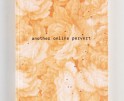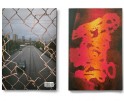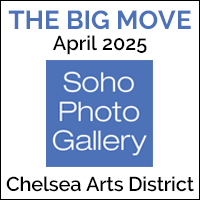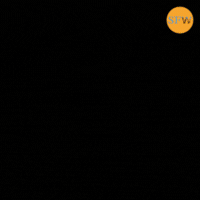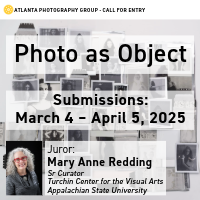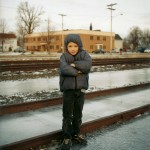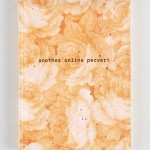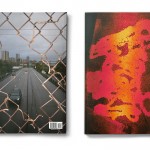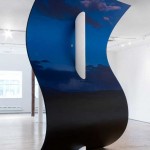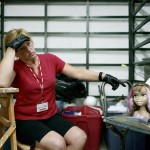Photographers on Photographers: Kiên Hoàng in Conversation with Jamie Maxtone – Graham
I first encountered the photography of Jamie Maxtone-Graham in 2019 when I came across his series “State Of Youth” from 2007. At the time, I was in college and just starting my photographic journey and I can still recall the reaction I had when I saw these images for the first time. They were completely outside all the definitions of what good photography should look like that were being taught in school. Jamie’s photos felt distinct, bold, and even bizarre, yet they evoked something indescribable in me, tinged with a sense of nostalgia about an old city that is only left in memories.
Three years later, I had the opportunity to attend a photography workshop led by Jamie here in Hanoi. During that time, through our class discussions and casual afternoon tea chats, our ongoing conversations made me realize the importance of believing in my own creative vision and trusting the process. He has helped me gain a greater openness in my practice, freeing me from the rigidities I had previously imposed on myself.
To me, Jamie is not only a mentor but also a trusted friend. In this conversation, I would like to explore two of his projects, “State of Youth” and “The Desiring Garden”. I think the ideas behind these two bodies of work speak about his artistic interests and the evolution of his practice.
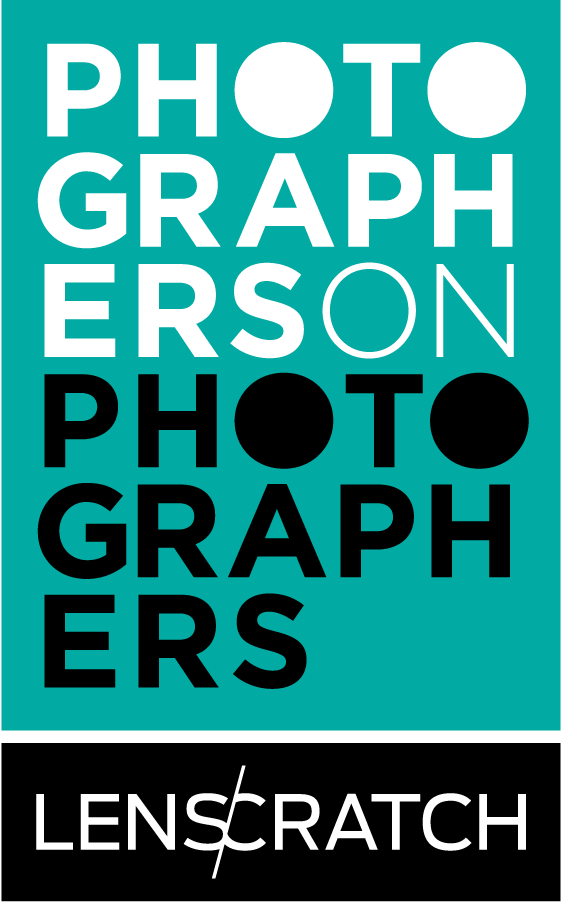 Jamie Maxtone-Graham is a cinematographer and photographer from the US with previous experience in mainstream Hollywood films as well as independent filmmaking. In 2007 he relocated to Hanoi, Vietnam where he continues living and has worked in multiple capacities as producer, director and educator across numerous platforms both commercial and artistic.
Jamie Maxtone-Graham is a cinematographer and photographer from the US with previous experience in mainstream Hollywood films as well as independent filmmaking. In 2007 he relocated to Hanoi, Vietnam where he continues living and has worked in multiple capacities as producer, director and educator across numerous platforms both commercial and artistic.
Kiên Hoàng: With “State of Youth” from 2007-2008 – your first long term series in Vietnam – what were some of the key insights or surprises that emerged as you expanded your focus beyond just the signs of Western influence to capture a more nuanced view of Vietnam’s diverse youth populations?
Jamie Maxtone-Graham: When I moved to Hanoi in 2007, I had just received a Fulbright Research Grant funding my proposal to photographically document contemporary youth culture at the moment when Vietnam was joining the international economic community as a member of the World Trade Organization (WTO). My thinking was that as East-West economic exchange occurred, so too would culture be transnational – even if in only one direction, from West to East. In previous trips to Vietnam (I had been to Vietnam numerous times shooting films and photographing beginning in 1990 through the mid-2000s), I had seen the nascent signs of hip-hop and skate culture and I thought this would be a good framework to begin exploring the idea of ‘youth’. I lived in NYC in the early 1980s through the early ‘90s and had witnessed first hand the absolute explosion of hip-hop as raw, from-the-street, inner-city expression; it seemed to me a kind of thrilling protest and political gesture of the ignored underclass and it gradually took over everything – music, fashion, art, film. It was eventually seized upon by the commercial class and then exploited for raw profit. But as it related to youth in Vietnam in the mid-to-late 2000s, I came to realize that this was no rebellion or political expression; it was about young people finding community and social activity. The other thing I came to understand was that Vietnamese young people were far more interested in what was going on culturally in South Korea and Japan than in the US.
KH: From the project description, it seems your lens gradually widened to include young people from different socioeconomic backgrounds, many of whom had little connection to Western culture. What creative and technical approaches did you use to sensitively document this complexity? And how did your own evolving perspective as a researcher and photographer shape the final body of work?
JMG: So while my early photographs were of a couple of different groups involved in skateboarding and Hip-Hop, there appeared to be limits to what I thought I could see by continuing in this way. These were mostly middle class kids with the means to afford the swag and fashion. I broadened the scope of the work to include those outside of that particular socio-economic group and, to me, the series became much more resonant by including working class young people in the series. Vietnam has an incredibly young demographic so it was not difficult to encounter young men and women, 15-25 years old, nearly everywhere I was. I carried my camera everywhere I went and every moment was a potentially photographic one. I developed strategies – waiting outside of schools when class let out, going to youth parties at state institutions, letting local friends take me places most westerners would not know to go to, spending hours in public parks on weekends, etc. – and just walking, walking, walking all throughout the city. You can get in very good shape as a photographer.
JMG: Personally, this work was the first time in decades I had dedicated myself to an ongoing, long term project in photography. After graduating college where I studied film, photography and literature, I moved to NY and started working in the film industry, first as an editor and then joining the film union as a camera assistant and working my way up to eventually become a DoP. Although I always had my small b&w film camera handy, for my living I shot films for other people – small indie films and larger studio projects for theatrical or TV distribution. This first photography project in Vietnam was a way for me to reconnect to what I wanted to do with the still camera in a concentrated way and without the clutter of a crew; just me, the camera and my wits and instincts. It’s a process that here in 2024 still continues even though I work in a very different way now than when I began in 2007.
JMG: I would say that the main thing I discovered and that I continue to love about the medium is the way one can use this little machine to initiate a connection to other people in a way that is somewhat impossible without. Of course, it requires bringing your own self to the encounter, being as open as possible and giving anything that is asked for. I don’t want to mythologize the process because it really still requires risk and selflessness and those remain challenges. I would imagine that most photographers are somewhat introverted at heart – I am – and the camera is great therapy in engaging with that. The conversations I’ve had and the situations I’ve been in due to the camera would simply not have existed without. Those very human things are far more important to me than any technical challenges; those things shape me as a creative person and as a human and no technique can offer that same satisfaction or growth. Five or six years ago, I stopped exhibiting; I just entirely lost interest in the ‘market’ as it exists. I realized that the further from the moment of making I got, the less interesting everything that followed seemed. I didn’t show a great deal but those several experiences illustrated to me what mattered most in my own practice and it wasn’t being seen or celebrated. Answering these questions here is about as public as I ever care to be anymore. Maybe it’s even too much, but you’re my friend and maybe this will help you.
KH: As we look back on this project over 15 years later, how do you feel its significance or resonance has evolved, both personally and in terms of its cultural impact? What do you hope viewers might take away from engaging with these two bodies of work today?
JMG: The thing that delights me about the work in State Of Youth (made in 2007-08) is that in the West, people look at these photographs and think ‘oh, this is how it is’ and people in Vietnam look at them and feel a kind of deep nostalgia – ‘this is how we were.’ The people in those photographs and their peers are now mostly in their 30s and maybe have families and kids of their own and some of those pictures really resonate and evoke deep memories. On the one hand they are timeless and descriptive and expressive but on the other hand they are a kind of memento mori, a marker of the passage of time and the flight of youth.
KH: I’ve noticed a progression in your work – moving from candid, documentary photos of everyday moments to more intentionally staged portraits. This shift in creative approach appears to have persisted throughout your later projects, including the transition from ‘State of Youth’ to ‘The Desiring Garden’. I’m curious to understand what inspired or influenced this evolution in your photographic practice over time.”
JMG: Following ‘State Of Youth’, I did two more personal projects working in a similar social documentary mode; one about the fascinating phenomenon of public wedding photography called Rented White Gowns and the other was a more open-ended look at the area surrounding the beautiful French-built Long Bien Bridge. Both of these series were made in the manner of the ‘invisible photographer’ observing with very little or no interaction between myself and the people I was photographing.
This is the generally traditional way that all of the great photographers worked that I admired and I emulated that, albeit in my own way. But the instinct was the same – the photographer remains invisible in the photograph. Of course, it’s the greatest fiction.
Around this same time, I had become interested in exploring the Long Bien market – a wholesale fruit and vegetable market – that only functions at night when the trucks are permitted to enter the city. I knew I would have to use lighting (it’s dark in there) and then I settled on the idea of portraiture, somewhat influenced by the works of August Sander and other great portrait makers I admired. I am functional in Vietnamese language so having conversations and communicating my interests with the people I came to photograph in that area over the following two years was not difficult. I worked alone carrying the camera, light stand, strobe and umbrella all through the dark market and surrounding lanes and I met, conversed with and photographed hundreds of people after sundown. It was a pretty revelatory time for me and I loved the encounters, the collaboration and the accidents of public portrait making. I have continued making portraits in varying ways since then and I continue to this day.
KH: I’d love to hear more about “The Desiring Garden” from 2011. What inspired you to create these surreal, staged scenes blending natural and artificial elements in the urban setting of Hanoi?
JMG: All of the photography series I’ve made while living in Hanoi have in some way been informed by or flowed out of the previous one(s). Prior to The Desiring Garden, I had been making these quiet, dignified portraits at night in a pretty marginalized section of the city using a simple off-camera strobe and inviting the people I met each evening to collaborate on a photograph with me. Those two projects (When Evening Comes, 2009 and The Long Bien Picture Show, 2010) were undertaken in an attempt to flatten the power relation I enjoy as a white, western photographer living in SE Asia; I had previously simply walked around taking pictures without consent and now I wanted to try making pictures with the permission and participation of the people in my photographs.
So after two years of making these portraits at night in small dark lanes and the city’s night market, I was really ready for a change of scenery while continuing to explore other possibilities in portrait making. I was pretty interested in trying something more overtly connected to the historical colonial record and to the history of art. I started considering the ways in which foreigners have always portrayed the ‘exotic’ East and, in the case of Vietnam, how the colonial French regarded Indochina and its inhabitants. I was particularly attracted to the paintings of Henri Rousseau and his fantastical depictions of forests and creatures created without having ever stepped outside of France. This was the starting point.
KH: From the project description, it seems you were sourcing materials like flowers, vegetables, and raw animal’s parts from local markets to construct these Rousseau-like paintings. Can you talk about your process of scouting locations, finding your subjects, and orchestrating these elaborate scenes? How much were you collaborating with the people you photographed versus directing them?
JMG: At that time I was living quite close to the botanic garden (Vườn Bách Thảo) which was, incidentally, designed and built by the French in the 19th century to collect their Colonial flora and I spent a lot of time there every week exercising. It’s a popular place for people in the area. I began to think of ways to use this tiny oasis of green in the heart of the incredibly dense urban core of the city and to create something which was at once surreal and truthful, a bit horrible and beautiful all in one gesture. After a little trial and error and some technical tests, I simply went to the botanic garden to see if I could do this very public thing of putting fruit, flowers and animals (raw or cooked but not living) purchased at the local wet market into a preselected small landscape and invite people I met in the moment to step into the scene I had created and lit. The first one was a little nerve-wracking but it was a success. With each set up, I would invite a number of people I met in situ into each staged scene and then would later see which resonated the most. Many times it was clear as I made the portraits which one worked most effectively for me.
But, before actually going to make the photographs, I would scout for a small area that I could work with, usually a few days prior to shooting. I would make ‘location photos’ of the scene and consider what to include and what to leave out. I had to figure out how to exclude city buildings in the background to further the fiction of being in a forest or jungle. I also considered where the sun would be and the best time of day to shoot to not have to compete with direct sunlight. Back at home I would think about what to add to each scene and how to arrange things, sometimes making sketches. On the day of shooting, I would get what I needed from the market (sometimes pre-ordering things like a dozen pig ears, or 30 eyes, roasted birds, etc.), load my motorbike with camera, strobe, light stand and fruits and flowers and so on and head to the garden or park (I used a few different ones).
Typically, it would take me a couple of hours to place things and get the light balanced where I liked it (I would set the scene roughly two stops under-exposed and then set the flash at exposure so I had both shadow detail and contrast) and then it was a question of seeing who was around to be cast in the role of forest-dweller. Of course, the people I met there were all city people so there was a delightful contrast in that. I also really loved the serendipity of who I encountered on any given day; somehow it always seemed like we were destined to find each other for that moment. My only real direction was that, unlike the previous night portraits, I asked people not to look into the lens – like I was an unnoticed observer of some naturalistic scene. Often people found their own pose or stance within the place I had arranged for them.
I took a lot of pleasure in creating these images, playing with misconceptions and stereotypes, reflecting on art and history within this decolonialized landscape and in my own simple way being in conversation with it. I think the images are a little irreverent, maybe a bit more about myself than about the place but I also think they reflect something kind of real about the time and place. We inhabit this place together, this land during this time; the city expanding exponentially into the surrounding countryside and consuming everything into its development and leaving no raw green space for the natural world to exist. And so every animal, each fruit and flower and vegetable that exists in my photographed garden is dead – cut, picked or cooked. At the same time, I want people to look at the photographs and find them beautiful; to pause and reflect on the scene and only after a moment or two to realize that the butterflies are made from pig ears or that there are roasted birds in the trees and that nothing is actually as it should be.
KH: I’m curious about the visual and symbolic choices you made in those nude portraits – what were you hoping to communicate or challenge by evoking the colonial postcard aesthetic?
JMG: I have always loved the French colonial carte postale – the postcards sent from French Indochina back to family and friends in Europe to visually describe both the progress of the colonial experiment – European-style streets, buildings and developments – as well as the ‘otherness’ of the place. Among these are a quite large number of nudes or semi-nudes, almost entirely of women. Some of them are depicted in a natural setting – a riverbank scene, for example, with the women’s áo yếm (an undergarment) either wet or pulled aside to show their breasts – or in studio settings showing a fully nude woman in some fictive domestic scene, reclined on a daybed or chair. In all cases, there is a very static, staged feeling in these arrangements, a tension in the pose that belies the natural act. I collected hundreds of these off the internet over the years; I found them kind of remarkable artifacts and possessing a psychological similarity that told me more about the attitudes of the different foreign photographers than the people depicted. These were photographs by the French in Indochina for the French at home.
Anyway, in 2011 while working on The Desiring Garden, a French friend of mine in Hanoi offered his small plot of green in his backyard as a location. Since there would be no possible random encounter of subjects in his yard, I asked his Vietnamese wife if she would be interested in working with me to recreate some reflection on the carte postale. She agreed. At the time she was about 4 or 5 months pregnant and I was really glad to have this opportunity to work with her just in this moment. I set up the scene with a kind of preposterous abundance of lilies sprouting from under and around a wooden couch that she lounges on holding a single white lotus, a roasted dog rests at her feet and lotus seed pods dangle like shower heads from a tree branch above her, an áo yếm hangs on the back of the couch. The photograph came out quite well and, as it was the beginning of summer and we were all going off in different directions for some months, I casually mentioned it might be great to make an updated version when we were all back in the city in September. And we did.
By that time she was 9 months pregnant and I set up another scene in the same backyard with a different arrangement of animals and flowers. It’s maybe worth noting that in addition to the obvious progress of time present in her pregnancy, the different fruits and flowers in all of the images of this series are a kind of timestamp marking the different seasons as I photographed through them during that year.
After making another beautiful image in the garden with the very pregnant Mai Suong, this time standing and gesturing somewhat artificially towards a tree branch heavy with perching roasted pigeons and surrounded by lotus petals at her feet, I suggested that the third and final piece of the impromptu triptych would have to be at some point after her son was born. And we made that photograph too… It has a scale and theatricality that I think hit a peak compared to all the other images in that series. I think in some ways it’s the most beautiful – but I love them all, together and individually as well.
KH: What are you working on right now and what are your plans for the future?
JMG: An ongoing long term project of mine which hasn’t been touched on here are the series of intensive photography workshops I have run in Hanoi over the last decade. I very much consider these part of my ‘practice’. As you know, these are pretty immersive and personal – as well as historical and practical – and I am always moved and informed in different ways by each group of people I work with and their finished portfolios. I love the fact that at the start of each three month workshop there is nothing and at the end there are nearly a dozen new incredible bodies of work and some slightly-altered human beings attached to them. That sometimes gives me more satisfaction than making my own work.
I started running these workshops after recognizing that there were only short-term opportunities in studying photography outside the university system and nothing that emphasized genuinely personal picture making in the way I had been exposed to. Aside from helping people find their own voices visually, I really treasure staying engaged with the community in this fairly intimate way. A lot of very personal ideas get explored inside the class space.
I also continue making my own small projects, primarily portraits, in Hanoi (my home) and I’ll go on with that and contribute to the art and photography scene here for as long as there is interest in what I can offer. I remain excited by the potential of the traditional photographic arts and in simplifying my own process even as the technology changes drastically and AI and other influences emerge. I have my own influences which continue to inform me and I hope that I am, in some way, somewhat influential to some small number of people around me.
Kiên Hoàng is a photographer from Vietnam. Having been born and raised in the center of Hanoi, then relocating to the suburbs broadened Kien’s perspective on the urbanization process as well as its effects on city fringe areas. His photographs depict the disappearance of familiar landscapes as well as the ruptures in family relationships.
Follow Kiên Hoàng on Instagram: @kienhoanng
Posts on Lenscratch may not be reproduced without the permission of the Lenscratch staff and the photographer.
Recommended
-
Photographers on Photographers: Conner Gordon in Conversation with Gregory HalpernDecember 6th, 2024
-
Photographers on Photographers Megan Bent in Conversation with Nakemiah WilliamsOctober 10th, 2024
-
Tamara Reynolds and Zach Callahan in Conversation with Ashlyn Davis BurnsOctober 5th, 2024
-
Photographers on Photographers: Kylee Isom in conversation with Brea SoudersSeptember 19th, 2024
-
Photographers on Photographers: Blake Andrews in Conversation with Rian DundonAugust 30th, 2024



















